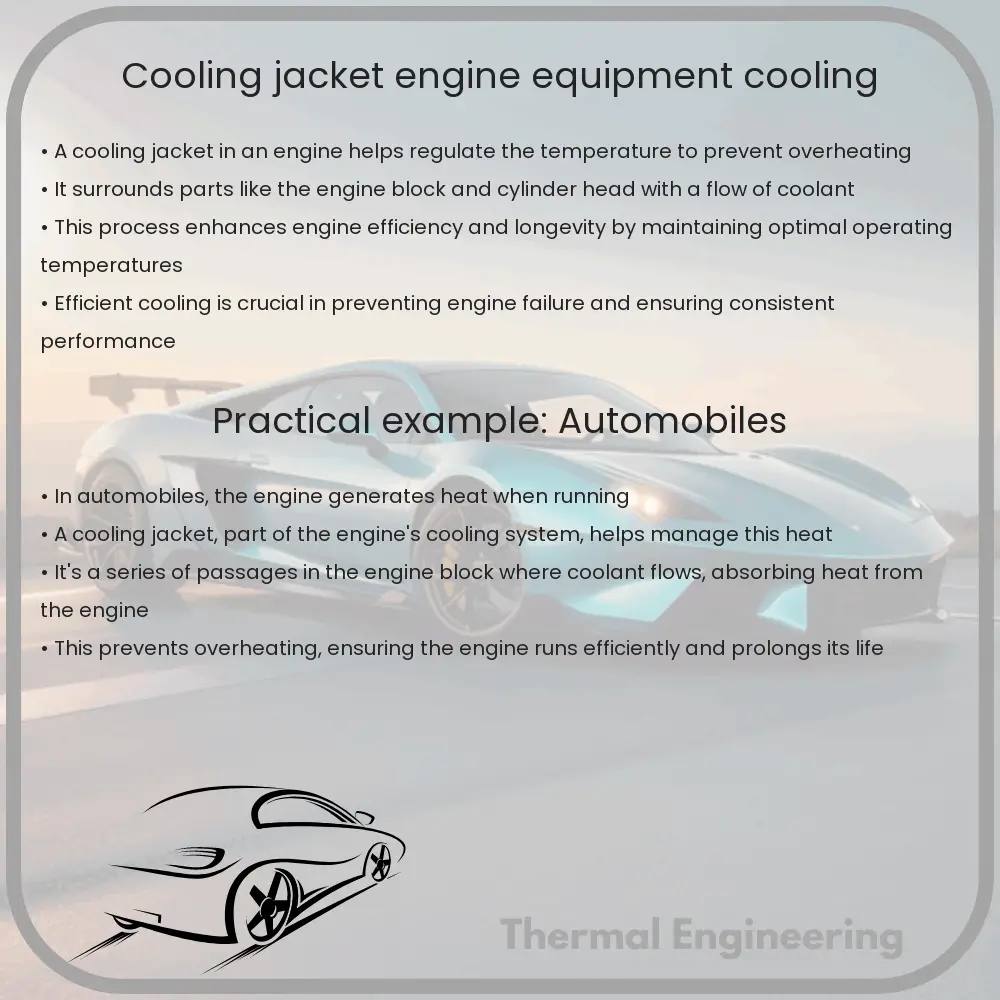Learn how cooling jackets prevent overheating in engines and equipment by improving efficiency and durability through advanced materials and design.

Understanding Cooling Jackets in Engine & Equipment Cooling
Cooling jackets are a critical component used in the cooling systems of internal combustion engines and various industrial machinery. They are designed to manage the temperature of the engine and prevent overheating, ensuring the machinery runs efficiently and safely. Let’s explore how cooling jackets work, their importance, and the different materials used in their construction.
How Does a Cooling Jacket Work?
A cooling jacket is typically integrated around or within an engine block or other equipment components that generate significant heat. The primary function of a cooling jacket is to transfer heat away from the engine parts to avoid damage or failure due to high temperatures.
The process involves the circulation of a coolant — usually water or a glycol mixture — through channels that surround the heat-generating parts of the engine. As the coolant moves through the jacket, it absorbs the excess heat. This heated coolant then travels to a radiator where it is cooled by air flow before recirculating back into the cooling jacket. This cycle continually repeats during the operation of the engine or equipment.
Importance of Cooling Jackets
- Prevention of Overheating: By effectively removing excess heat, cooling jackets prevent engines and machinery from overheating, which can lead to mechanical failures and decreased lifespan of the equipment.
- Improved Efficiency: Maintaining an optimal operating temperature enhances the efficiency of the engine. An engine that operates too hot or too cold can experience reduced performance and increased fuel consumption.
- Enhanced Durability: Consistent temperature management helps avoid the thermal stress that can cause engine components to degrade prematurely. This prolongs the life of an engine.
Materials Used in Cooling Jackets
The choice of materials for a cooling jacket is crucial as it must have excellent thermal conductivity to efficiently transfer heat, be resistant to corrosion, and capable of withstanding high pressures and temperatures. Common materials include:
- Aluminum: Known for its lightweight and excellent thermal conductivity, aluminum is a popular choice for cooling jackets in automotive engines.
- Cast Iron: Although heavier, cast iron is extremely durable and also has good heat-conducting properties, making it suitable for heavy-duty engines.
- Stainless Steel: Used in high-performance and industrial engines, stainless steel provides high resistance to corrosion and can handle high temperatures well.
- Copper: Occasionally used due to its superior conductivity, copper is often found in specialized, high-performance cooling systems.
Cooling Jacket Design Considerations
Designing an effective cooling jacket involves several considerations to ensure optimum performance:
- Coolant Flow: The design must ensure a steady, uninterrupted flow of coolant to all critical areas of the engine or machinery.
- Channel Layout: The arrangement and size of the cooling channels are crucial; narrow channels increase the cooling efficiency by maximizing surface area contact between the coolant and the jacket.
- Pressure and Temperature Tolerance: Cooling jackets must be designed to withstand the specific operational pressures and temperatures of the engine or machinery.
- Maintenance and Accessibility: Consideration should be given to the ease of maintenance and coolant replacement, which can significantly affect the overall durability and functioning of the system.
Conclusion
Cooling jackets are an indispensable part of engine and equipment design, crucial for maintaining operational stability and efficiency. Understanding the mechanics behind cooling jackets, their materials, and design considerations can help in optimizing their performance and extending the lifecycle of engines and machinery. As technology advances, so too do the materials and methods used to enhance cooling solutions, reflecting ongoing innovations in engineering.